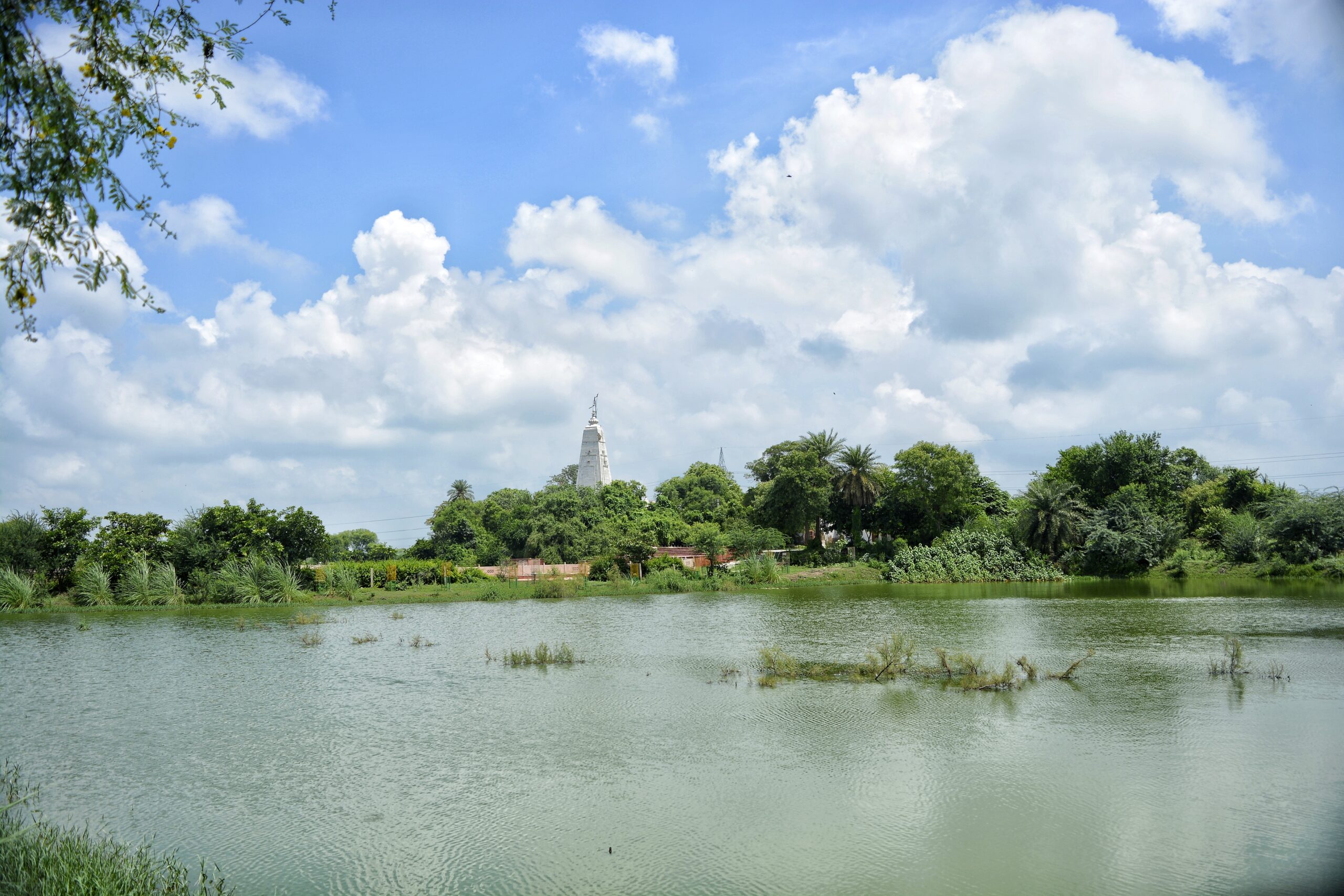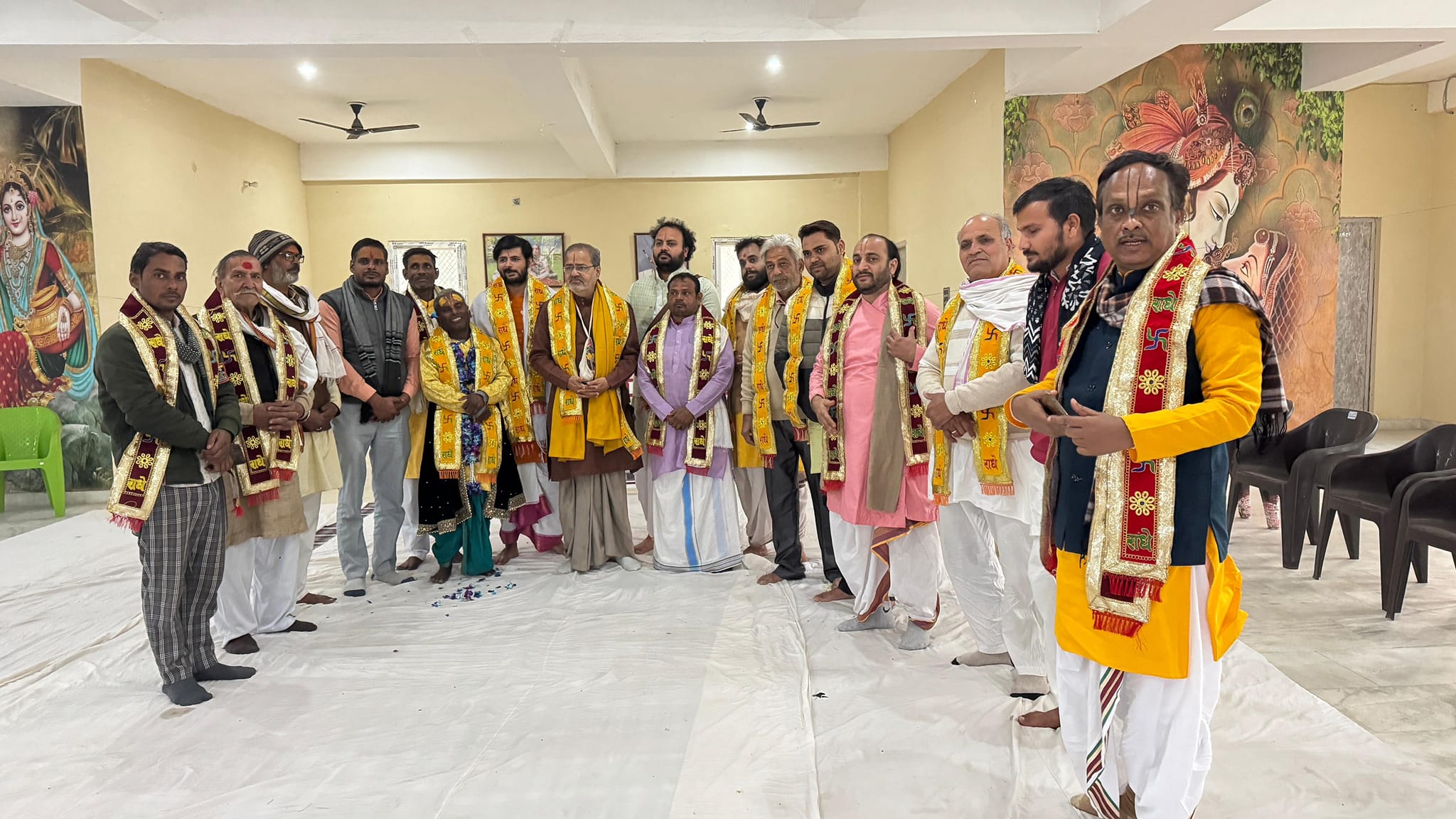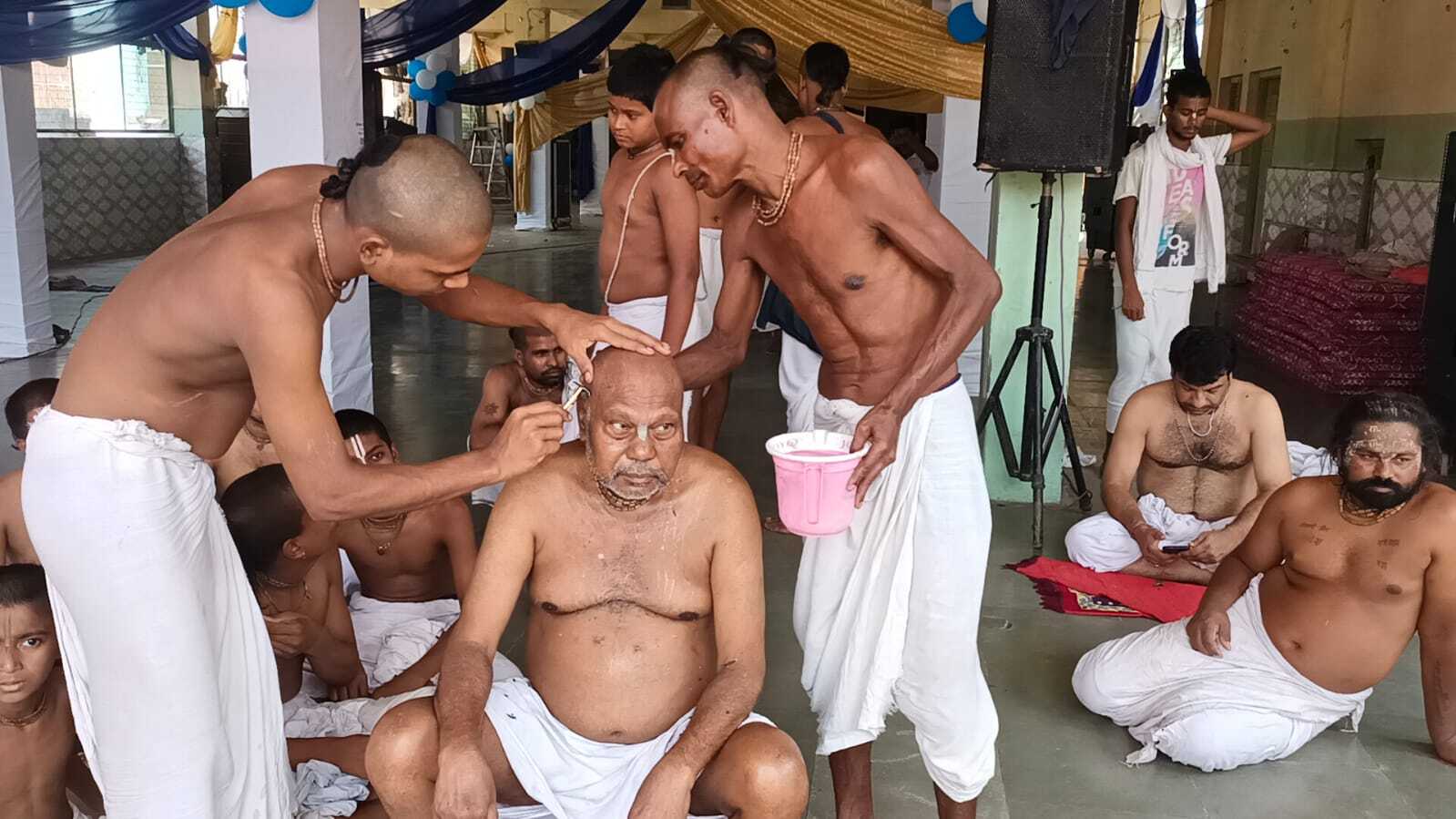Friends of Vrindavan (FoV) has taken the initiative to conserve and regenerate the sacred groves around Mansarovar Lake. FoV has already planted indigenous trees around the lake which used to be a rare wetland grove and bird sanctuary, just few miles across the Yamuna in Vrindavan.
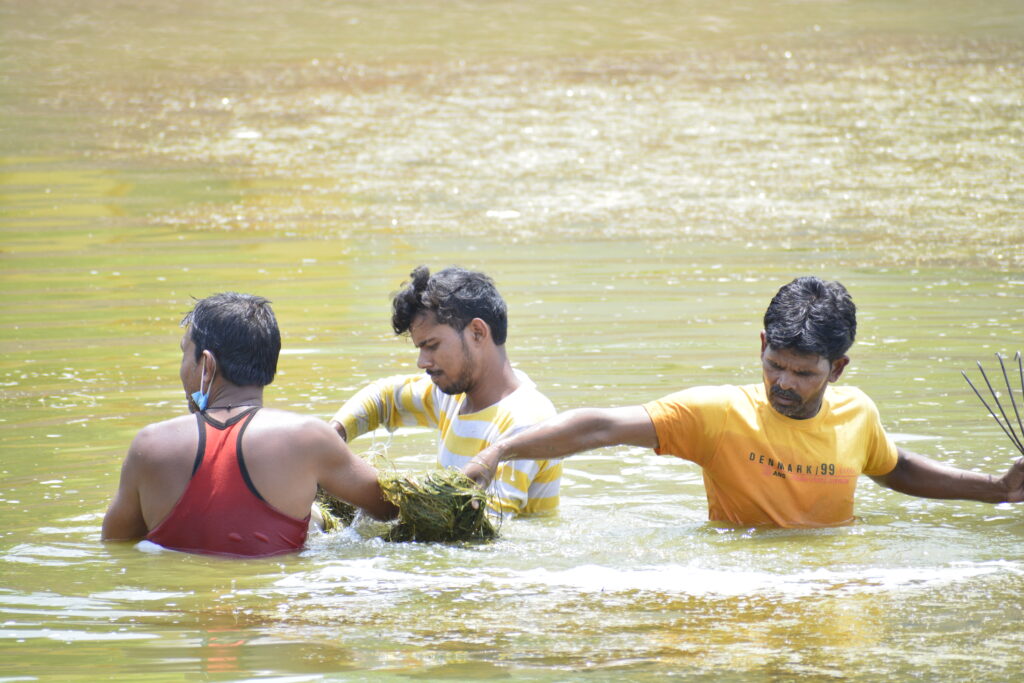
During the 90’s, the lake was surrounded with bushes that served as habitat for a wide variety of migratory birds. It was a bird watcher’s paradise, particularly those interested in aquatic species.
Once among the largest lakes in Braj sprawling an area greater than five acres, Mansarovar was reduced to one third of its original size by an artificially constructed boundary. With the changing times and apathy of all the stakeholders, its water level and size shrunk to 60 per cent compared to what it was in the late nineties.
The lake was restricted with a stone pavement and boundary on all four sides. During this exercise, the bushes, shrubs and a major portion of the groves around it were also destroyed. This drove away birdlife, who could no longer fish here, as the water became starved of oxygen.
Concerned about the deteriorating ecosystem, environmental NGO ‘Friends of Vrindavan’, has once again decided to revive its natural beauty in 2020. FoV saved the lake from choking with the invasive Water Hyacinth and planted varieties of indigenous trees around the lake in the late 90’s of the 20th century.
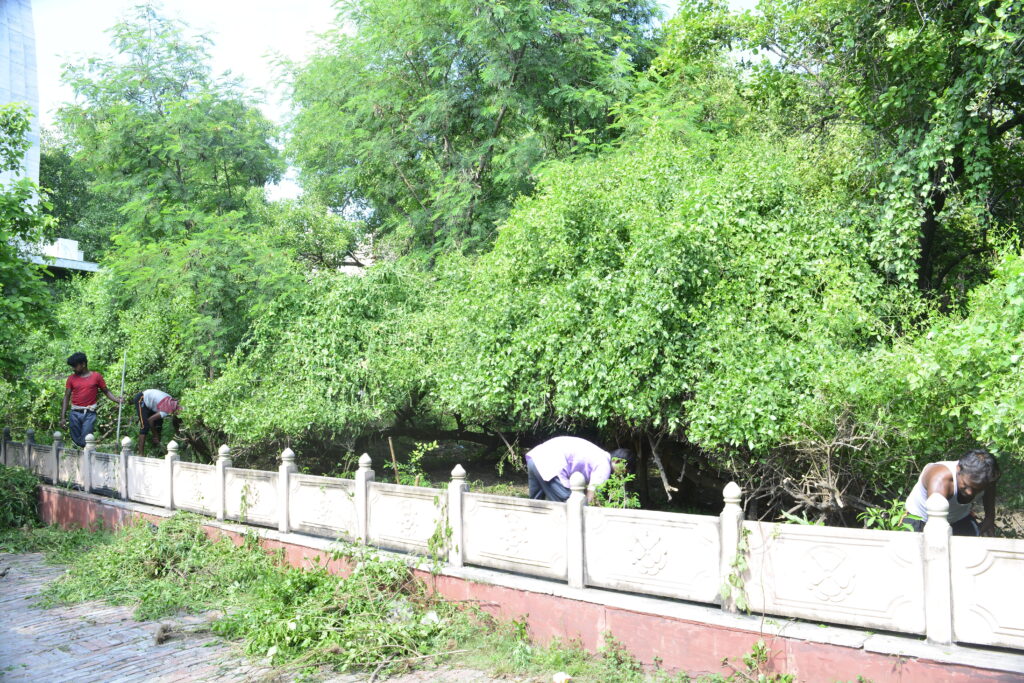
Now, (after 20 years), FoV began the conservation of the ‘Sacred Grove’ so that birds and wildlife can return to their previous haunts. The lake is also being restored which choked again with aquatic weeds.
“As a part of the initiative we initiated to plant native trees and shrubs around the Lake. We have already planted more than three hundred traditional trees and preserved the holy trees in the grove,” said Gouri Shankar Saini, overseeing the project.
Being one of the pilgrimage centers of Braj, Mansarovar is visited by devotees who organize religious events followed by ‘bhandaras’ in the vicinity of the Lake and Radharani Temple.
These events generate a huge amount of garbage which is left scattered in the premises. Going further, FoV has arranged a proper garbage disposal system so that the sanctity of this ‘Sacred Grove’ is maintained.
“We are currently investing in ways of securing the long-term protection of the Lake and surrounding habitat so as to establish a permanent sacred wildlife sanctuary,” said Jagannath Poddar, Director of ‘Friends of Vrindavan’.
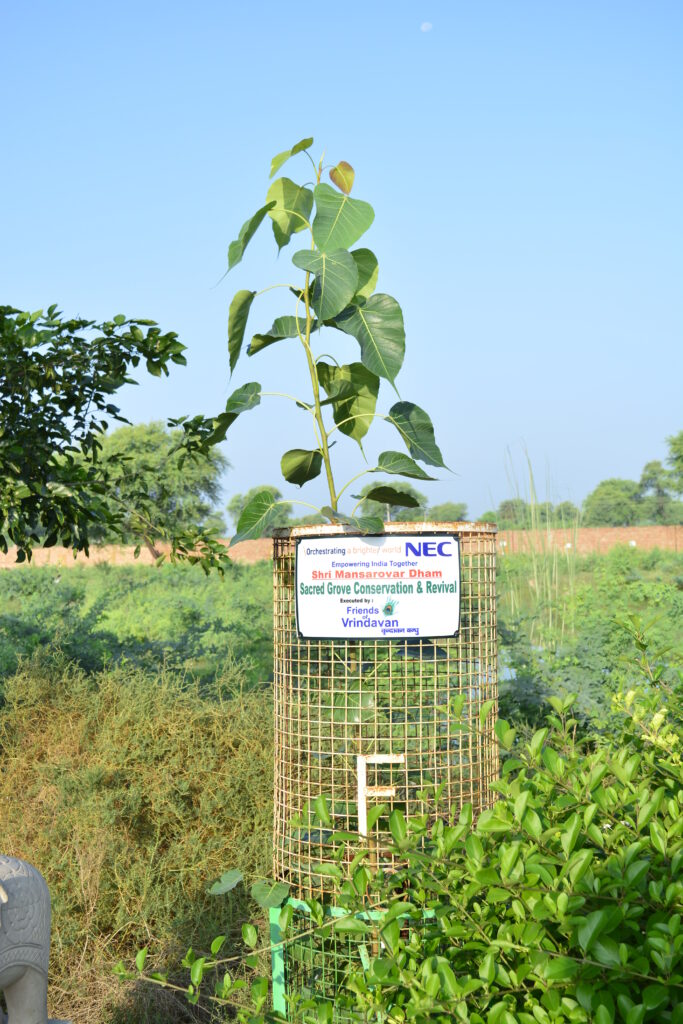
The real visitors of Mansarovar are the birds. Crowds of Waterfowl and Heron frequent the place. A special visitor is the Sarus Crane, an endangered species which breeds only in Northern India. The Sarus is the world’s tallest flying bird; a male can stand as tall as six feet and is held in reverence in Braj.
Local tradition has it that the Lake, or ‘sarovar’, was formed from the tears of Shri Radha, while she was in an intensely emotional state of wounded love, ‘maan’. She came here alone fearing that she had lost Krishna. The solitary image of her that is worshiped in a shrine beside the lake helps devotees meditate on this most beautiful and intense ‘Maan Lila’ of Radharani.
The initial support for this project was received from the NEC Technologies Ltd. for the preservation of the Sacred Grove and the revival of the indigenous trees. The project has been expanded to restore the lake by clearing aquatic weeds and planting more trees. According to the FoV sources it needs financial assistance from the philanthropic bodies in securing the long term protection of the lake and surrounding habitat.
Those interested in supporting their initiative may write to FoV on [email protected]


